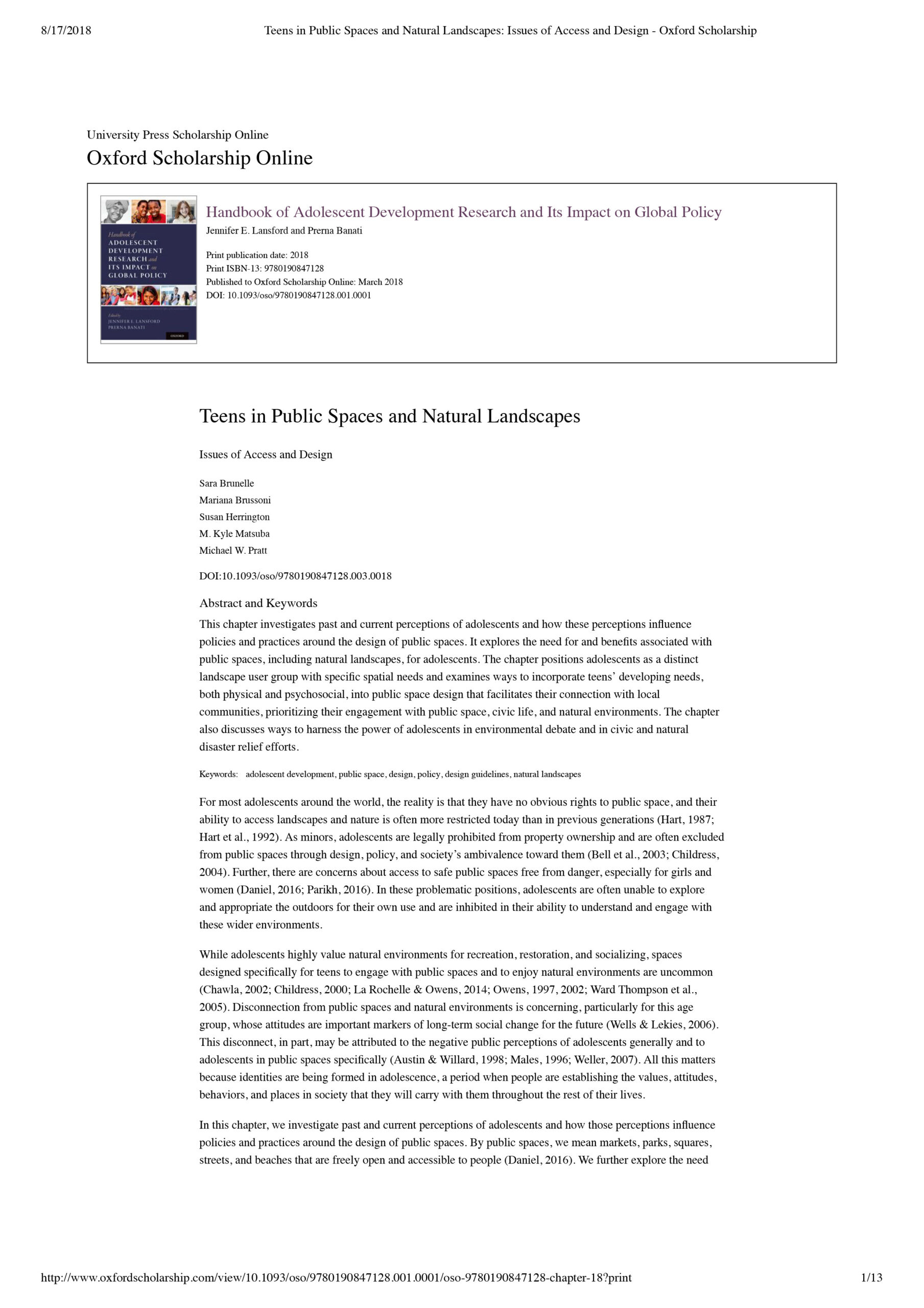Teen-Centric Design & the Spatial Characteristics that Support Teens (2015-2018)
Publication: 'Teens in public spaces and natural landscapes' / Handbook of adolescent development research and its impact on global policy (2018): 361-379.
With few precedents of spaces strategically designed to invite and accommodate teens, this project focuses on design strategies recommended by research on the spatial and environmental needs of this age group, expanding on strategies and offering possible applications to enhance teenagers’ connection to their communities.
Resulting in a publication in the UNICEF’s Handbook of Adolescent Development Research and Its Impact on Global Policy (2018), the project began as a design investigation to distill interventions that particularly address the needs of teens in public and open natural spaces. The project investigates past and current perceptions of adolescents and how these perceptions influence policies and practices around the design of public spaces. It explores the need for and benefits associated with public spaces, including natural landscapes, for adolescents. The project positions adolescents as a distinct landscape user group with specific spatial needs and examines ways to incorporate teens’ developing needs, both physical and psychosocial, into public space design that facilitates their connection with local communities, prioritizing their engagement with public space, civic life, and natural environments.
